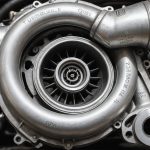Introduction
In the world of British racing, precision is paramount. Every detail, no matter how minute, can influence a car’s performance on the track. Among these details, camber and toe settings play critical roles in ensuring stability, cornering efficiency, and overall speed. But how do you ensure these settings are perfectly dialed in? Today, we’ll delve into the intricacies of measuring and adjusting the camber and toe settings in a British racing car, providing you with a comprehensive guide tailored for accuracy and performance.
Understanding Camber and Its Importance
Camber refers to the angle of the wheels in relation to the vertical axis of the car when viewed from the front. This angle can significantly affect how the tires make contact with the road, impacting both grip and tire wear.
Additional reading : What are the benefits of retrofitting LED headlights in a British vintage car?
Positive vs. Negative Camber
Positive camber means the top of the wheels tilt outward, while negative camber means they tilt inward. Most racing cars, including British ones, use negative camber to enhance grip during cornering. The inward tilt helps distribute the load more evenly across the tire during high-speed turns, improving traction and stability.
Measuring Camber
Accurately measuring camber requires a camber gauge. Here’s a step-by-step guide:
Have you seen this : What are the key considerations when selecting an aftermarket turbocharger for a UK diesel engine?
- Prepare the car: Place the car on a level surface and ensure the tires are properly inflated.
- Attach the camber gauge: Fix the gauge to the wheel’s hub or rim.
- Read the angle: Adjust the gauge until it’s perpendicular to the wheel. The angle displayed is your camber reading.
For precision, repeat this process for each wheel. Small discrepancies can affect handling, so aim for uniformity.
Adjusting Camber
Adjusting camber involves altering the suspension components. In most British racing cars, this is done via the control arms or camber plates. Here’s how:
- Locate the adjustment points: These are usually found at the top of the strut or the control arm.
- Make the adjustment: For more negative camber, shorten the control arm or adjust the camber plate inward. For less, do the opposite.
- Re-measure: After adjustments, re-check the camber to ensure accuracy.
Proper camber settings can drastically improve handling, but they must be balanced with other suspension elements to avoid excessive tire wear.
Toe Settings: What They Are and Why They Matter
Toe settings determine the direction the wheels point relative to the car’s centerline when viewed from above. This setting is crucial for steering response and tire wear.
Toe-In vs. Toe-Out
Toe-in means the front of the wheels point toward each other, while toe-out means they point away. Each configuration has its pros and cons:
- Toe-in: Enhances straight-line stability but can make steering less responsive.
- Toe-out: Improves turn-in response but can destabilize the car at high speeds.
Measuring Toe
Measuring toe requires a toe gauge or string alignment. Here’s a straightforward method using a toe gauge:
- Position the car: Ensure the car is on a level surface.
- Attach the gauge: Place the gauge on the front and rear of the same wheel.
- Read the measurements: Compare the distances between the front and rear of the wheels. The difference indicates the toe setting.
Adjusting Toe
Adjusting toe settings typically involves the tie rods. The process is as follows:
- Locate the tie rods: Find the rods connecting the steering rack to the wheel hubs.
- Make the adjustment: Turn the tie rod adjusters to change the wheel’s angle. Clockwise usually increases toe-in, while counterclockwise increases toe-out.
- Re-measure: Always double-check your settings after any adjustments.
Balancing toe settings can enhance your car’s responsiveness and stability, crucial for competitive racing.
The Role of Suspension in Achieving Perfect Settings
Suspension systems are the backbone of any racing car. They not only influence camber and toe settings but also affect overall handling and tire wear.
Types of Suspension Systems
British racing cars often use independent suspension systems, which allow each wheel to move independently. This flexibility aids in achieving precise camber and toe adjustments. Key components include:
- Control arms
- Shock absorbers
- Springs
- Anti-roll bars
Adjusting Suspension for Optimal Settings
To achieve the best camber and toe settings, consider the entire suspension setup. Here are some tips:
- Check ride height: Ensure the car’s height is consistent on all four corners. Uneven ride height can skew camber and toe settings.
- Balance damping and rebound: Proper shock absorber settings help maintain tire contact with the road.
- Use quality components: High-quality suspension parts offer more precise adjustments and better durability.
Regularly inspect and maintain your suspension system to keep your camber and toe settings optimal.
Practical Advice and Tools for Precision
Achieving precision in camber and toe settings requires not just knowledge but also the right tools and practices.
Essential Tools
- Camber gauge: For accurate camber measurements.
- Toe gauge: For precise toe readings.
- String alignment kit: An alternative method for checking alignment.
- Torque wrench: Ensures bolts are tightened to the correct specifications.
Practical Tips
- Document your settings: Keep a log of your camber and toe settings for reference. This can help in making incremental adjustments.
- Test and tweak: After adjustments, test the car under race conditions. Minor tweaks can make a significant difference.
- Consult professionals: If unsure, seek advice from experienced mechanics or engineers.
Consistency and attention to detail are key. Regular checks and adjustments can keep your car performing at its best.
Conclusion
Measuring and adjusting the camber and toe settings in a British racing car is a meticulous process, but the rewards are substantial. Accurate settings enhance handling, improve tire longevity, and can make the difference between winning and losing a race.
By understanding the principles behind camber and toe, using the right tools, and following a methodical approach, you can achieve optimal performance for your racing car. Whether you’re a professional racer or an enthusiast, these adjustments form the cornerstone of a finely-tuned vehicle.
In the competitive world of British racing, precision is your ally. Equip yourselves with knowledge and tools, and you’ll be well on your way to mastering the art of camber and toe adjustments. This mastery can elevate your racing experience, ensuring your car handles impeccably on every corner and straightaway.











